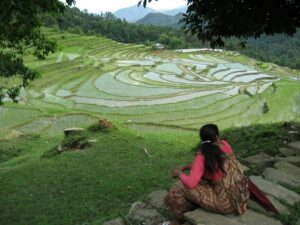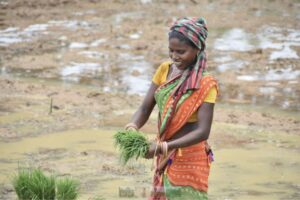
The first World Rice Conference organized by The Rice Trader in Mactan, Cebu, Philippines, on 27-29 October 2009 featured extensive analysis of demand and supply scenarios from major and emerging rice exporters, and revealed the first rice tasting competition. The event was dominated, however, by speculation about India’s future rice output and the Philippines’ damage on the back of three tropical storms (two before the conference and one immediately after).
Philippine Secretary of Agriculture Arthur C. Yap kicked off the event with an emphatic call for stronger foundations for food security such as a global rice reserve. He said that the global rice industry has to deal with climate change and its impact on rice production vis-àvis the mammoth task of ensuring food security and helping ease the plight of the poor. Citing the billions of dollars spent by the U.S. government to bail out a banking industry that caved in under self-created pressures, Secretary Yap was certain that even a small portion of that fund would do well in arming the global food industry with the necessary tools to counter food insecurity and the consequent commercial pressure on prices. Such an investment would also help power a second Green Revolution, which is an absolute necessity now.
Pleased with the work of the International Rice Research Institute (IRRI) and its continued support for rice production initiatives, Secretary Yap called on members of the business sector to help fund rice research.
The global rice industry faced two massive blows to output in 2009—India’s delayed monsoon and the tropical storms that damaged the Philippines’ harvests. A stronger El Niño is expected to aggravate rice production uncertainties in 2010. In light of this, Secretary Yap was joined by a chorus of speakers who shared concerns about future output, weather anomalies, and their collective impact on a market already rattled by the series of events that led to the aptly named “rice crisis” of 2008.

Mr. Jeremy Zwinger, President and CEO of The Rice Trader and publisher of Rice Today, said that as traders try to be cautious, delays in buying decisions coupled with disruptions in supply could put more pressure on market prices. Mr. Zwinger said that quick price movements reflect a fluid situation in demand and supply fundamentals, as prices constantly adjust to perceived surpluses and deficits that in fact simply reflect a finely balanced, or “thin,” global market.
Highlighting India’s significance in this trade balance, Dr. Samarendu Mohanty, senior economist and head of IRRI’s Social Sciences Division, noted in his analysis that India could possibly import soon to satisfy food security needs given the shortfall in production caused by the delayed monsoon. As suggested by the conference speakers, more information about the harvest would shed more light on expected Indian demand. At the time of this writing, India’s production expectations rose by 2.2 million tons and Indian government officials also began to challenge the need for imports. According to the Food Corporation of India’s official statement on 22 December 2009, the new, revised production estimates suggest a more comfortable supply proposition together with an overall rice stock position of India at 22.9 million tons as of 1 December 2009 (against the buffer norm of 5.2 million tons).
More positive news came from emerging exporters from Cambodia and Myanmar, as Mr. Ny Lyheng, managing director of the Federation of Cambodian Rice Millers Associations, and Mr. Wing Aun, vice chairman of the Union of Myanmar Federation of Chambers of Commerce and Industry, disclosed that Cambodia and Myanmar offer strong rice production as well as new export availabilities because of the increase in paddy area and investments in milling and postharvest infrastructure.
African importers, who would be expected to be the most likely to feel the brunt of any supply uncertainties, were also described as well stocked to ride out the current shocks in the market. Many countries will continue to emphasize Africa’s own investments in food production.
The road ahead, however, was described by conference delegates as bumpy at best. Most expect the issues from the Philippines and India to drive the immediate future of rice markets as El Niño and other weather phenomena are expected to have a strong influence on global supply.
Over the medium to longer term, climate change is seen as having the biggest influence on hopes for a sustainable food supply, and this challenges the global rice community tasked to feed the world.








